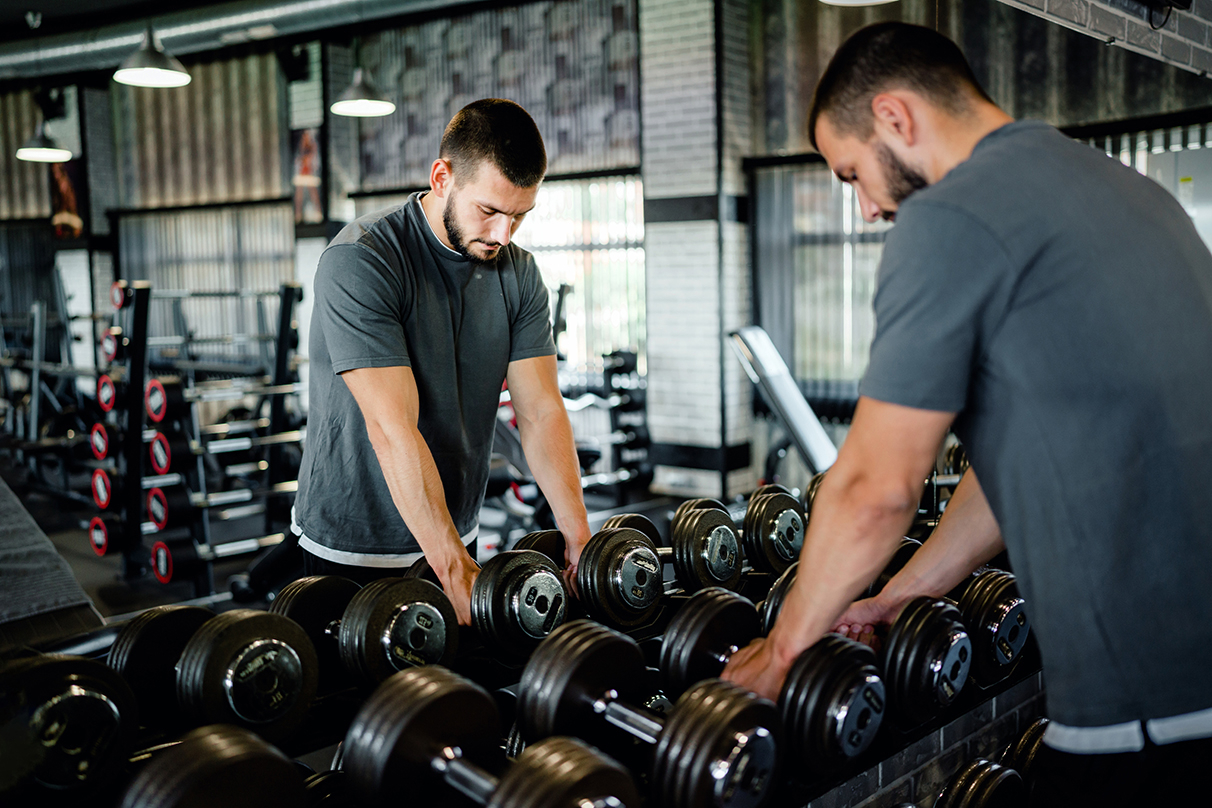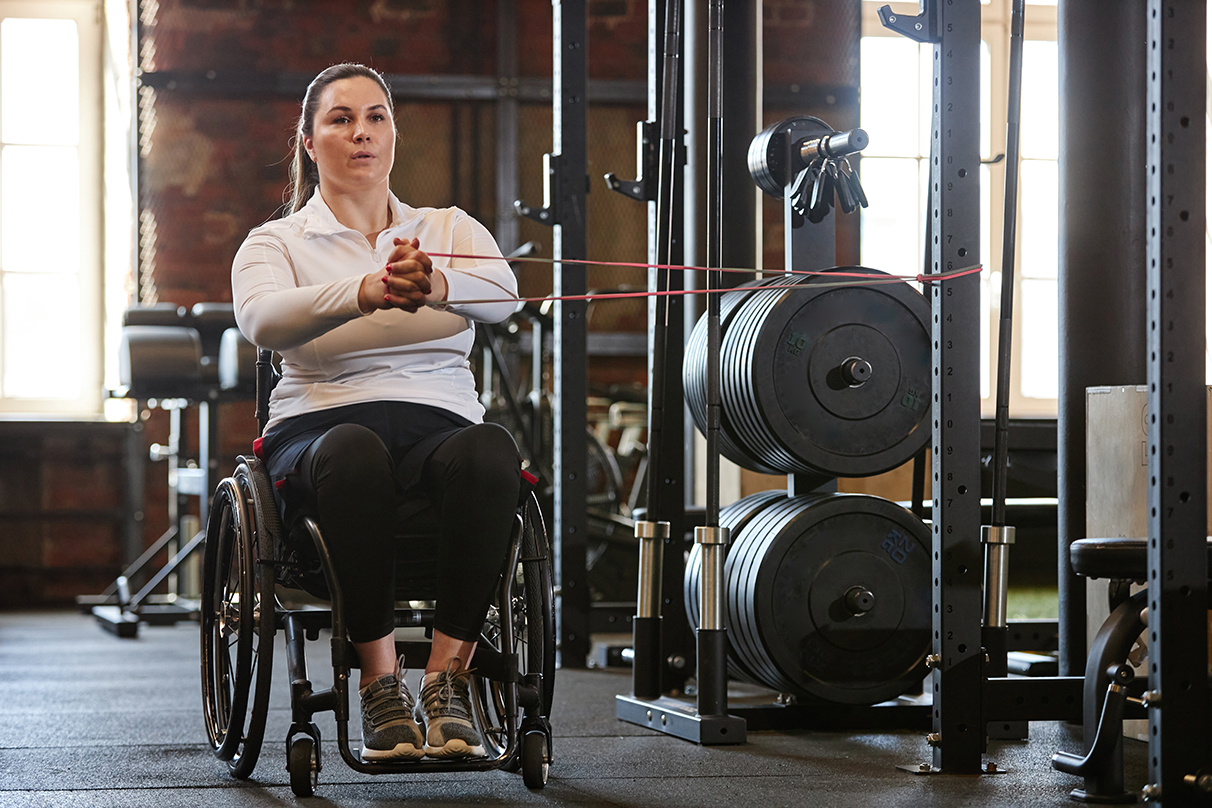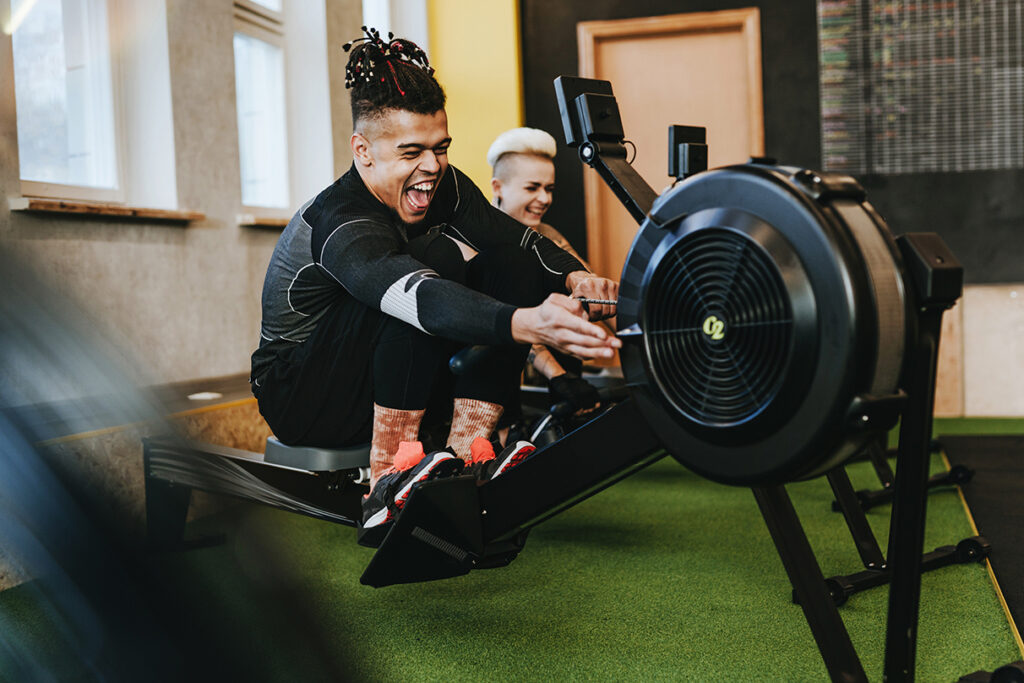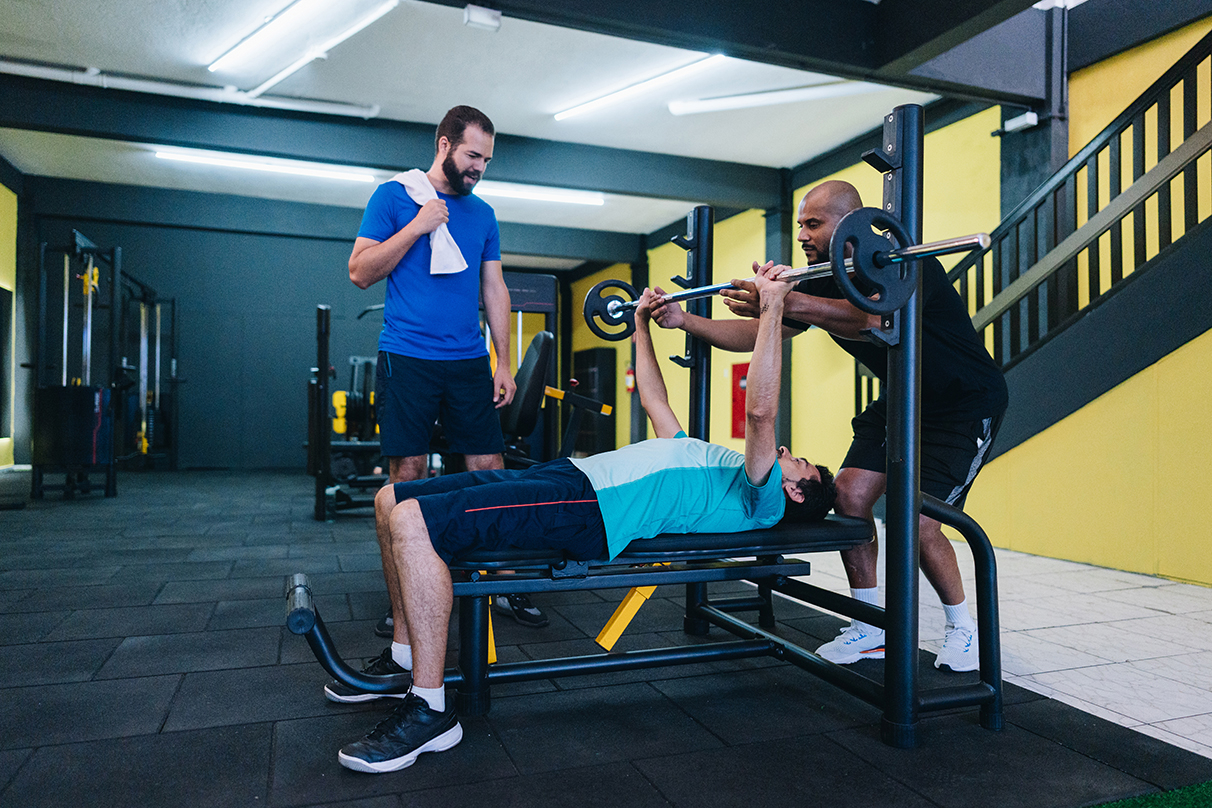Fitting out your gym with the best commercial gym equipment is key to running a competitive fitness business. Choose the right types of gym equipment, and you’ll be better able to attract and retain more members. Here’s what you need to consider.
In 2025 the number of gyms, health clubs, and fitness centres in New Zealand reached over 1,150. So, competition for members has never been fiercer. With so many other options to choose from, it’s crucial to give members what they want.
And that means kitting out your premises with the right commercial gym equipment.
You need to offer all the standard gym equipment your members expect. Plus, the pieces that will help you stand out from other clubs. And you need to find it all at the right price for your business.
We’re here to help. In this guide, we’ll run through the best commercial gym equipment, top brands, and key things to consider.
Stay in the know & get business tips straight to your inbox!
Why choosing the right commercial gym equipment matters
Investing in high-quality commercial gym equipment is more than a business expense. It’s a commitment to your members.
By taking your time to choose quality equipment for your gym business, you’ll:
- Save money in the long-term and get better return on investment. Thanks to with kit that can withstand heavy use and rarely needs replacing (or repairing)
- Help members achieve their fitness goals efficiently. By providing equipment that delivers a smooth training experience
- Reduce the risk of injuries thanks to machines designed with user safety in mind
- Enhance the workout experience for members with equipment that has engaging tech built-in
- Strengthen your brand image and reputation thanks to top-of-the-line, well-maintained equipment
The right gear can help you boost member satisfaction and retention. It supports a diverse range of fitness goals. And, ultimately, sets your gym apart from the competition.

Essential commercial gym equipment list
Your members want to enjoy training at your gym. They want to follow personalised workout plans. And they want your support. That means having access to the right gym equipment.
The exact types of commercial gym equipment you’ll need will depend on:
- The type of facility you run
- The members you want to attract
Start by kitting out your club with the following categories. And you’ll be on the track to success.
Strength training equipment
Strength. Bodybuilding. Functional training. Your members will want a wide range of equipment options for strength training.
- Free weights: Dumbbells, barbells, and kettlebells offer versatility. Supporting functional and traditional strength exercises
- Weight machines: Machines like the leg press, chest press, and lat pulldown provide controlled movements. Making them ideal for beginners and experienced lifters alike
- Functional trainers: Cable machines and multi-station setups add variety and efficiency to strength training
Cardio equipment
Many gymgoers want to be faster, better conditioned, and fitter. And that means they need to keep on top of their cardio.
So, you need to provide a range of commercial cardio gym equipment to help them warm up, work out, and cool down.
- Treadmills, ellipticals, and bikes: Essential for endurance training and calorie-burning workouts
- Rowing machines and stair climbers: These provide low-impact yet high-intensity cardio options. Great for full-body engagement
Rehab & resistance equipment
Building back up to fitness after an injury. Starting a brand-new fitness journey. Looking to improve mobility and function. In all these scenarios, members will seek equipment that helps build functional muscle strength.
- Stretching aids and foam rollers: Essential for pre- and post-workout routines
- Rehab and resistance tools: Useful for recovery and low-impact training
With this list of essential commercial gym equipment, you’ll have the basics in place for your gym. And provide your members with all the key equipment they need.
As you grow, you can invest in a wider range of weight machines or specialist equipment. And look at connected gym equipment too.

Best commercial gym equipment brands for 2025
Here are the best commercial gym equipment brands to consider for 2025.
1. Life Fitness
Life Fitness is one of the most recognised names in the game – and for good reason. With decades of experience behind them, they offer tried-and-tested equipment that holds up in even the busiest gyms. Whether it’s cardio machines, strength training gear, or their performance-focused Hammer Strength line, Life Fitness delivers durability, smart tech, and a polished aesthetic. If you want reliability and a brand members will instantly recognise, this one’s hard to beat.
2. Technogym
Technogym brings a premium feel to any fitness space. Known globally for their sleek designs and tech-forward approach, their equipment not only looks good but connects seamlessly with apps, wearables, and personalised programs. If your gym is aiming for a high-end member experience with top-tier innovation, Technogym helps you deliver that boutique polish with the functionality to match.
3. Matrix Fitness
Matrix is built for performance and high-traffic environments, making it a go-to for busy gyms and clubs. Their equipment is ergonomic, stylish, and packed with intuitive features – think interactive displays, smart connectivity, and minimal maintenance. They offer a full suite of gear, from cardio to strength to functional training, and it’s all designed to keep members moving and engaged.
4. Performaxx
Performaxx is an Aussie favourite known for its hands-on service and practical, no-fuss approach. They specialise in helping gyms design smart, functional spaces with quality equipment that won’t blow the budget. With gear to suit everything from PT studios to full-service gyms, Performaxx brings flexibility, local know-how, and great value to the table – perfect if you want expert advice and end-to-end support.
5. RAW Fitness Equipment
RAW Fitness Equipment is all about serious, hard-wearing gear that can take a beating. Whether you’re kitting out a HIIT zone, weightlifting area, or functional training space, RAW delivers strength and conditioning equipment built to last. Proudly Australian-owned, they’ve become a staple for clubs wanting affordable, commercial-grade gear with fast turnaround and no compromise on quality.
6. NovoFit
NovoFit is more than just an equipment supplier – they’re a full-service partner. With a huge portfolio of international brands like EGYM, Eleiko, and Precor, they give gym owners the freedom to mix and match top-tier products to suit their vision. NovoFit supports everything from boutique studios to large health clubs, offering expert design services, equipment fit-outs, and ongoing support across both Australia and New Zealand.
7. Blue Fitness
Blue Fitness has been a trusted name in New Zealand since 2002, helping gyms across the country access some of the world’s best equipment brands – including Les Mills Smart Tech, TRX, Concept 2, and more. Whether you’re starting fresh or upgrading an existing space, they bring deep industry experience, nationwide service, and tailored advice to make the whole process smooth from start to finish.
Before you start buying equipment…
Go deeperOpening a brand new gym? Make sure you do your due diligence on your preferred location before diving into buying equipment.
Read moreConnected gym equipment – the future of fitness
Basic gym equipment will get your fitness club off to a strong start. Want to offer your members an even better experience?
Then consider choosing connected gym equipment that integrates with your gym management software. Connected gym equipment will help make using your gym more rewarding for members.
What is connected gym equipment?
Connected gym equipment uses advanced technology to let users connect to the internet, apps, and other devices.
These connections create a motivating, personalised workout experience. And can even power real-time feedback for better results.
Examples of connected fitness equipment include:
- Treadmills, bikes and rowing machines that offer live and on-demand classes, immersive training, and performance tracking
- Strength training machines that provide guided weight training with form correction and progress tracking
- Ellipticals and cross trainers that feature virtual trails and immersive scenery
Benefits of connected gym equipment
Investing in connected gym equipment can bring many benefits for your business and your members:
- Improved engagement – interactive and immersive workouts keep members motivated and coming back
- Data-driven insights – equipment that tracks progress, helps set goals, and measures performance over time. And so, can help members achieve better results
- Customisation – connected fitness equipment can tailor workouts to individual needs and even provide coaching. So, working out is more effective and enjoyable
Connected equipment is rapidly growing in popularity. It aligns with the fitness trend for personalisation.

The cost of commercial gym equipment
There’s a lot to consider whether you’re looking at the cost of opening a gym, or upgrading an existing fitness facility. Equipment is an essential investment whether you buy, lease, or a mix of both.
Setting your budget
Before buying equipment, consider:
- Size and type of facility – larger gyms need more machines. Likewise, if you’re a premium fitness club, your members will expect a different spec of machine to a low cost gym
- Member demographics – match your equipment to your audience’s training preferences
- Long-term investment – prioritise quality and durability to save on maintenance/repairs
Expect to spend anywhere from $1,500–$10,000 per machine, depending on type and brand.
And always look for the most cost-efficient ways to source your new equipment from your preferred manufacturer. Instead of buying outright, you might want to consider leasing.
Thinking about opening a gym?
Go deeperPlan your gym’s success with our comprehensive business plan guide and workbook.
Read moreBuying vs. leasing commercial gym equipment
Ultimately, whether you choose to buy or lease commercial gym equipment will depend on your:
- Financials
- Long-term plans
- And specific needs
Have the capital and plan to keep a piece of equipment for many years? Then buying may be better. Prefer lower upfront costs and want the flexibility to upgrade and change equipment? Leasing could be better.
Benefits of buying
- Ownership – once you buy the equipment, it’s yours to keep. You have no further payments, and you can use it for as long as it’s functional. You of course have the option to resell it.
- Cost-effective in the long-term – if you plan to keep the equipment for many years, buying can be more cost-effective than leasing
- Customisation – when you buy equipment there’s more opportunity to choose exactly what you want and customise it to fit your gym’s needs and aesthetics
But, buying can be expensive. You’ll be responsible for sorting out maintenance and repairs. And if you plan on reselling equipment, you’re unlikely to get near to the original value.
Benefits of leasing
- Lower upfront costs – leasing typically involves lower monthly payments compared to buying. So, it can be more budget-friendly for new or expanding gyms
- Flexibility – leasing makes it easier to upgrade to the latest equipment more frequently. Helping your gym stay relevant and adapt to changing workout preferences
- Maintenance and repairs – many lease agreements include maintenance and repair services, reducing your responsibility for upkeep
On the flip side, ongoing payments can stack up overtime. So, sometimes you’ll pay more in the long-run than you would have buying. Plus, customisation options may be limited.

Tips for choosing the right commercial gym equipment supplier
Choosing the right commercial gym equipment supplier is crucial. It will make sure you source high-quality, reliable equipment for your gym.
Consider:
1. Quality
- Durability – look for equipment that’s built to withstand heavy use and last for years
- Performance – make sure the equipment meets your club’s needs in terms of functionality, ergonomics, and user experience. Read reviews, speak to other gym operators, and test the equipment if possible
- Certification – check that the equipment meets industry standards and certifications for safety and quality
2. Warranty
- Coverage – review the warranty terms for each piece of equipment. Look for comprehensive coverage that includes parts, labour, and wear and tear
- Duration – a longer warranty period generally indicates confidence in the product’s durability and reliability
- Customer Support – make sure the supplier offers prompt and effective customer support for warranty claims and issues
3. Customer Service
- Responsiveness – check how quickly and effectively the supplier responds to enquiries and resolves issues
- Support services – see if the supplier offers extra services. For example, installation, maintenance, and training for your staff
- Reputation – research the supplier’s reputation for customer service. Look for testimonials and reviews from other gym owners
How to research and compare commercial gym equipment suppliers
Follow these 4 steps to research and compare suppliers, keep in mind that you may choose to source equipment from more than one:
- Conduct online research: Start by taking a look at supplier websites. Read about their offerings, warranties, and customer service available. Find reviews and testimonials from other gyms and fitness clubs. And check out industry forums and social media groups to get recommendations and insights from others.
- Request quotes: Always aim to get quotes from 3+ suppliers. This will help you compare prices, products, and support available. Be clear on your requirements and budget. And remember, you can always negotiate on terms and prices.
- Visit showrooms and tradeshows: Head to showrooms and tradeshows to test the equipment you’re considering investing in. Many of the biggest and even niche equipment suppliers will be at annual events such as AusFitness Expo. While you’re there, speak with other gym operators to get recommendations and advice.
The wrap up…
The fitness industry is competitive. Members have never had as much choice as they do now. So, it’s absolutely crucial to offer them the gym equipment they want to see.
High-quality, reliable, and versatile equipment ensures safety, enhances workouts, and boosts retention. Key categories include strength training, cardio, and rehab tools.
Top brands like Technogym, EGYM, and Life Fitness offer innovative, connected solutions.
Consider buying for long-term value, or leasing for flexibility.
Assess suppliers based on quality, warranty, and service. Research online, request quotes, and test equipment at tradeshows to make informed decisions. Power up your fitness business with high-quality gym equipment that your members love.
Get the fuel to go further. See the value that Xplor Gym software that integrates with many equipment brands can bring to your fitness business.
You might also be interested in…

by Xplor
-
First published: 09 June 2025
Written by: Xplor



